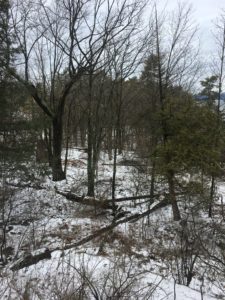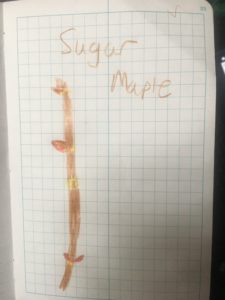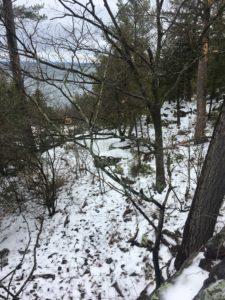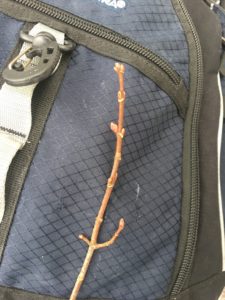Landscape Ecology- Tucker Diveley
 (snow covered ground)
(snow covered ground)

(hand drawn Sugar Maple)
 (snow covered- no showing of wildflowers)
(snow covered- no showing of wildflowers)
(Sugar Maple bud- Below)

Landscape Ecology
This was not an ideal weekend to go visit my phenology spot due to the inclement weather that struck Burlington. The snow has covered any signs of amphibians and sent the amphibians who made those signs back into hiding. But not all signs of life were covered in snow because the air was littered with American Woodcocks looking for tasty earthworms to eat and the occasional grey squirrel milling around in the cool air looking for food. Many of the tree species have started budding including: Maple, both sugar and red, red oak, and common/glossy buckthorne. Most of the ground cover today was a heavy thick icy snow melt that did not allow for any wild flowers to poke through.
The over all landscape of Oakledge Park is a edge habitat with the cool waters of Lake Champlain crashing against the shore. An interesting difference between this habitat than the more extreme top of the mountain edge habitat; is even though it has the same acidic well drained soils moss, lichen, and ferns grown in this edge. I think this is because the water up on the mountain comes mostly in the form of snow while this edge has more rain and can support a wetter habitat. It still lies on Munkton Quartzite and Iberville Shale which rises quickly from the water’s edge. Even though it seems like a rough habitat there is a good combination of hardwoods like: Pine, Oak, and Cedar which like the more acidic and well drained soils, mixed with a good understory of small Sugar Maples and Buckthorne. The more water dependent plants like lichen, moss, and ferns clutch to every rocky surface and even the chimney’s of old houses that local bird species now occupy. I only wish the ground was not covered in a thick layer of melting snow because I believe it robbed me of the potential my phenology spot could have been showing with some wild flowers and signs of amphibians.

Recent Comments